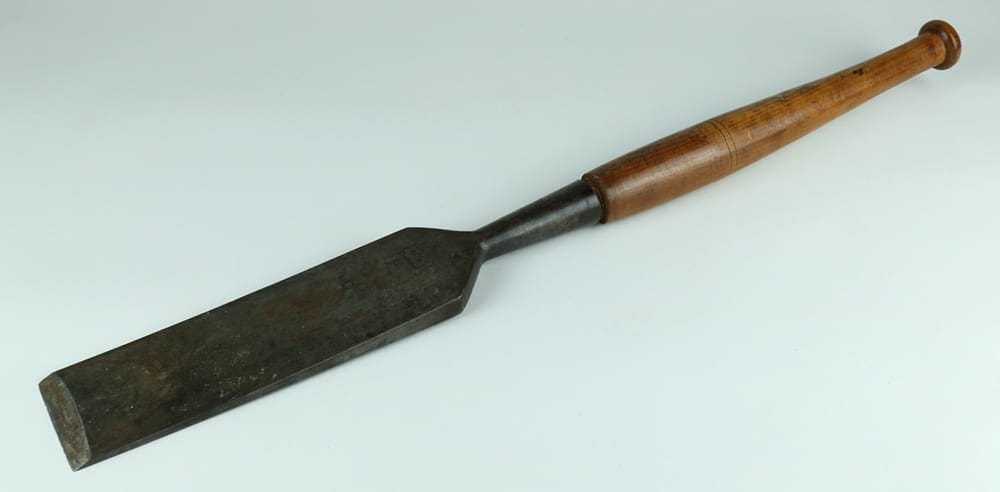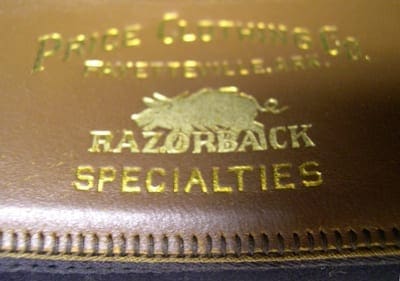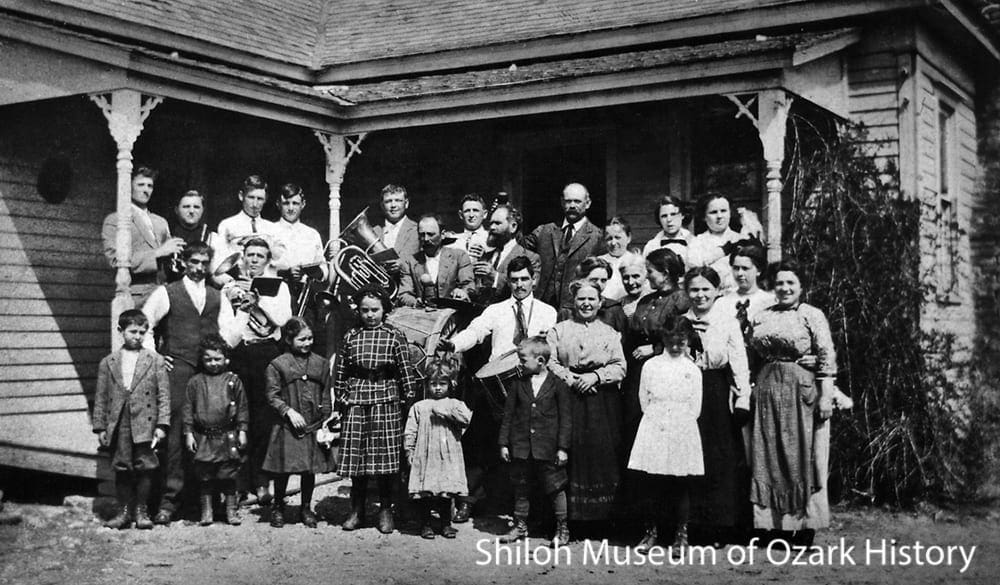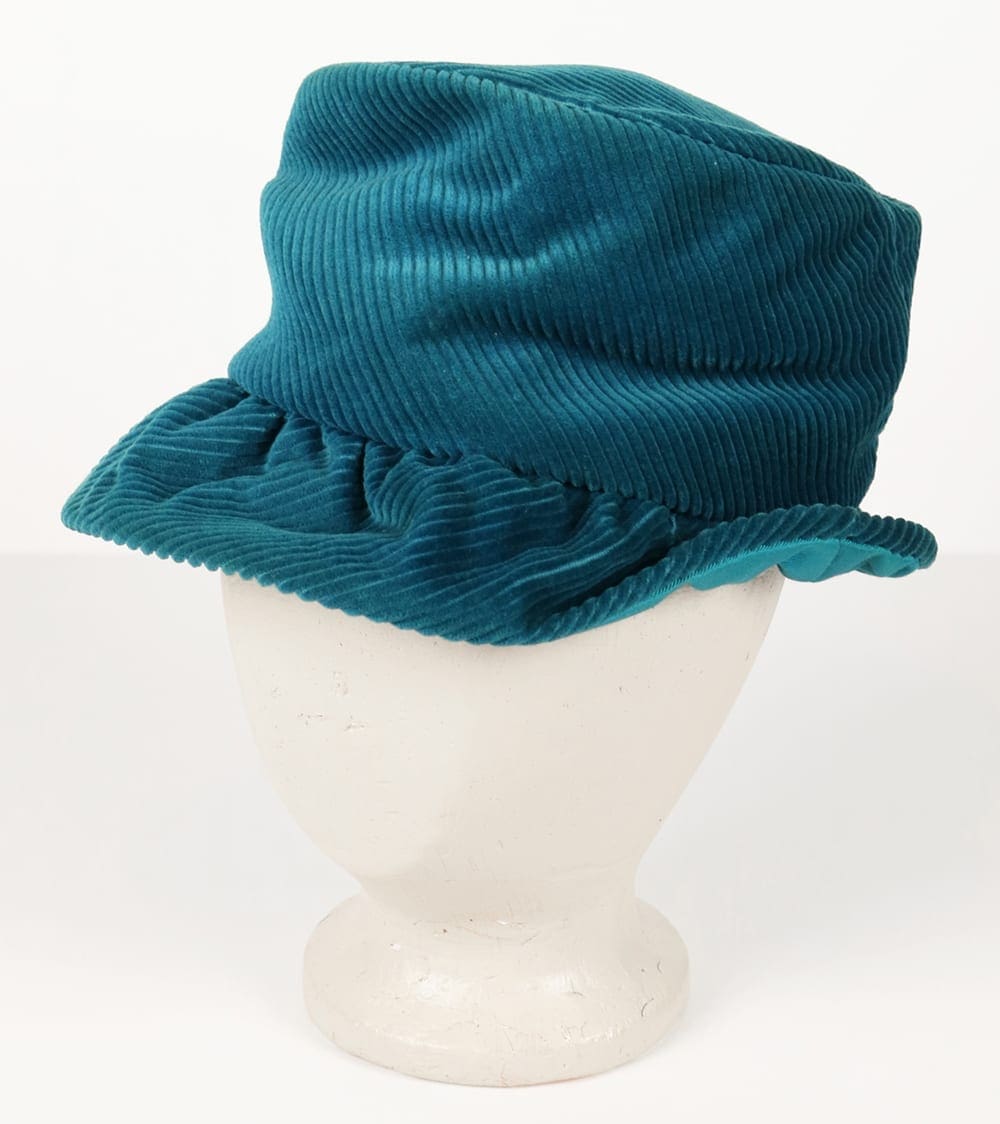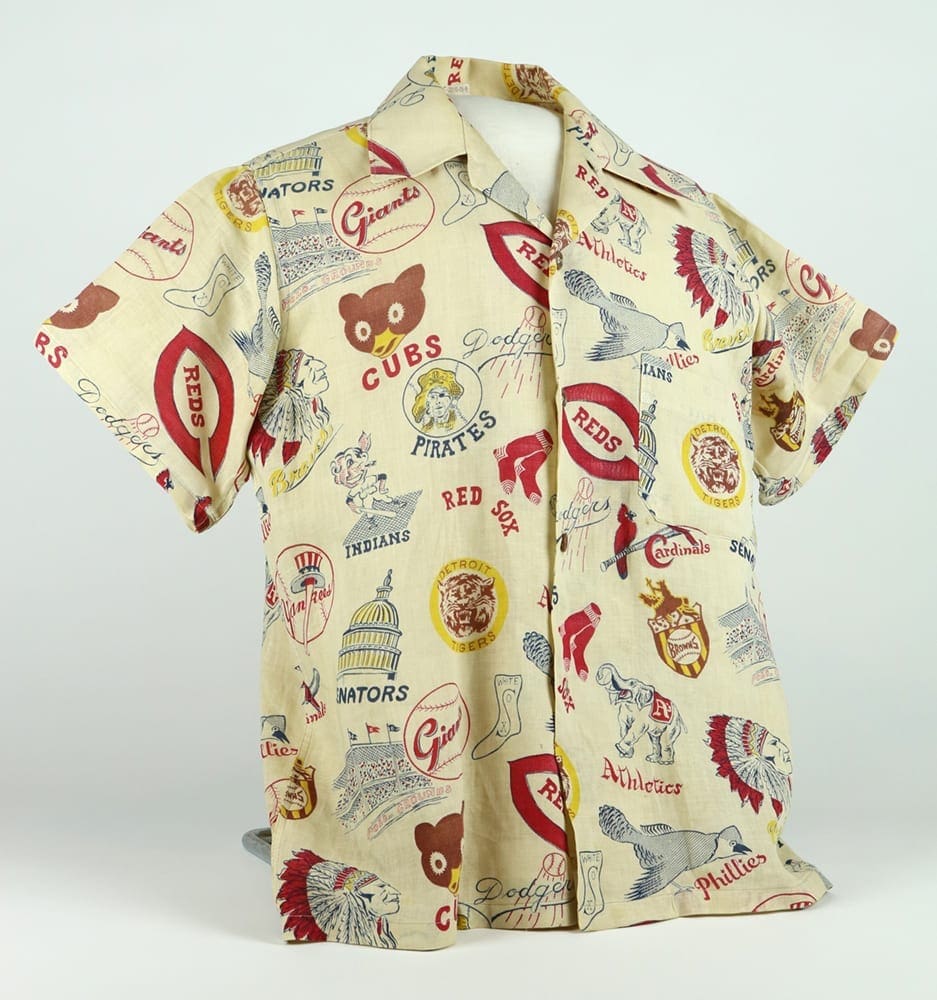Carpenter’s Slick
Donated by Dr. Stanley Applegate
A carpenter’s slick is a type of chisel used with two hands to pare long surfaces of wood following the grain. It was used in timber framing where heavy timber (logs and tree trunks) rather than dimensional lumber (like two-by-fours) was used in construction of buildings.
This Witherby-brand slick comes from the Lockwood Searcy estate. His grandparents came to Northwest Arkansas in the 1850s where they settled on a farm east of Springdale. The family moved into Springdale in the early 1870s. Lockwood (1879-1966) worked as a cooper as a young man, making barrels for the fruit industry that thrived in the area in the early 1900s. In the 1940s he inherited many items from his grandparents, including a box of tools. In later years Lockwood kept a workshop in the back of his garage. The Searcy garage and home are now part of the Shiloh Museum campus.

